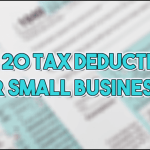
It’s the first quarter of the year and that means it’s tax time! It’s also IRS scam time.
This is the time of year when IRS scams increase. Scammers and spammers target taxpayers, tax preparers, and small business owners. The scams include bogus phone calls and IRS email scams purporting to be from the IRS but, in reality, they are from a spammer.
The IRS email scam message pictured above is just one of several variations of IRS scam emails that taxpayers are receiving currently. We received that one here in our general inbox.
The email appears to be from the IRS. But look closely. You’ll see that the return address is spoofed. The email message is really from a different address — not from the IRS.
Luckily, one of the wonderful features of Google Apps mail and Gmail is the excellent spam filtering.
The above IRS email scam message was placed into the SPAM folder automatically by Google’s filters. In addition, Google added a bright red label warning:
“Be careful with this message. Similar messages were used to steal people’s personal information. Unless you trust the sender, don’t click links or reply with personal information.”
Of course, even without the obvious red alert, the message seems anything but official. It has five telltale signs it is fake.
Here is how to spot a bogus IRS email scam:
First Proof it’s an IRS Scam — it’s an Email!
The fact that a so-called IRS communication came to you via email is the biggest proof it’s likely a scam. In an advisory issued last February, the IRS noted:
“It is important to keep in mind the IRS generally does not initiate contact with taxpayers by email to request personal or financial information. This includes any type of electronic communication, such as text messages and social media channels.”
If information is needed from you, the IRS will initiate contact in a paper mailing. It will probably be an official-looking envelope.
Getting an email out of the blue from the IRS is extraordinarily unlikely.
Wrong Return Address
Return addresses can be faked. An email can look like it is from one sender at first glance, but in reality it is sent by a spammer. Examine the email header information. See who really sent the message. (Go here for how to check email header information.) In this particular case, the email was sent from a domain called “enta.net.”
Remember, if it’s not sent from the IRS.gov domain, it’s not an official IRS communication.
Unprofessional looking, with typos
Does the message have punctuation and selling errors? In our example, we spotted numerous typos (we lost count after 10 typos). Also, the message itself is poorly spaced with different fonts.
The email looks slapped together. It’s doubtful an IRS message would look so amateurish with so many errors.
Vague or Incorrect Wording
The IRS is ordinarily precise about things like IRS form numbers, tax code sections and tax return processes.
Here, it doesn’t seem like the writer of the message even understands U.S. tax law. Phrases like “Tax payout” are not standard phrases in the world of IRS communications. “Tax refund” may be a common phrase, but that wasn’t used here. The more vague and incorrect notion of “Tax payout” was used.
Seeks Confidential Information
Ah ha! Now we get to the real purpose of the message.
The spammer wants something from you.
Usually these emails are what’s known as “phishing emails.” The spammer is fishing around trying to get you to reveal private information.
If you are unfortunate enough to reveal information, the spammer will use it to steal your identity, clean out your bank account or steal your tax refund. If you are a tax preparer, the scammer will steal information on your clients and get you into big trouble for a data breach.
Never click on a link inside a suspect IRS message. Never download and open any attachment in a suspect IRS message.
Both actions will potentially lead to getting a computer virus or malware installed without your knowledge on your computer. Or you will be fooled into going to a page that you THINK is the IRS website, but is instead a fake page designed to collect confidential information.
What To Do If You Get a Suspected IRS Phishing Email
Rule #1: Don’t be fooled. Be skeptical.
Rule #2: Educate your staff, including virtual assistants. It’s important that they be just as on guard and knowledgeable as you.
Rule #3: Report the scam. The IRS has set up an email address to be used by the public to report suspected phishing. Simply forward the suspected spam message to: [email protected].
[“source-smallbiztrends”]




